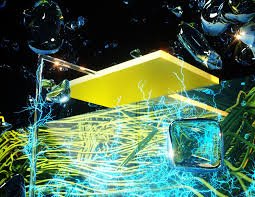Electricity is literally in the air at the University of Massachusetts Amherst, where a groundbreaking discovery by a team of engineers has unlocked the potential to harness clean, continuous energy from air humidity. Their revolutionary findings, recently published in the esteemed journal Advanced Materials, showcase a scalable technology that could be broadly implemented.

Xiaomeng Liu, the study’s lead author, expressed enthusiasm in a UMass Amherst news release, stating, “This breakthrough is thrilling. We’re effectively harnessing clean electricity from the air around us, opening vast new avenues for energy production.”
The innovation centers on nanopores—tiny pores no wider than 100 nanometers. These microscopic openings are crafted into a thin material layer, creating a sizeable pathway for water molecules. The engineered structure allows water molecules to move from the upper to the lower material layer, colliding with the edges of these nanopores. This interaction results in a higher concentration of charge-carrying water molecules in the upper layer compared to the lower one, establishing a natural charge imbalance akin to a battery.
This technology builds on previous research by Jun Yao, assistant professor of electrical and computer engineering, and his colleague Derek Lovley. Their earlier work in 2020 introduced the “Air-gen” device, which utilized natural proteins to generate electricity from air. The latest advancements demonstrate that a variety of organic or inorganic materials can be used if they incorporate properly sized nanopores.
“The concept is straightforward yet revolutionary. It was previously undiscovered and could lead to diverse applications,” Yao remarked. Engineers could design custom devices suited for different environmental conditions—wetter climates like rainforests or dry regions, enhancing versatility and accessibility.
What sets this updated Air-gen device apart is its ability to operate continuously, regardless of the time of day or weather conditions. This feature positions it as a more sustainable alternative to other renewable resources like wind and solar energy. Its compact size also means that numerous devices could be implemented together without significantly increasing environmental impact.
Jun Yao envisioned a future where access to clean electricity is ubiquitous: “With the universal Air-gen effect, our vision for a world powered by clean energy is within reach.”
This innovative approach not only paves the way for more eco-friendly energy solutions but also demonstrates the potential of atmospheric humidity as a reliable power source. With their ability to operate around the clock under various conditions, these devices could significantly contribute to the global shift towards sustainable energy.






